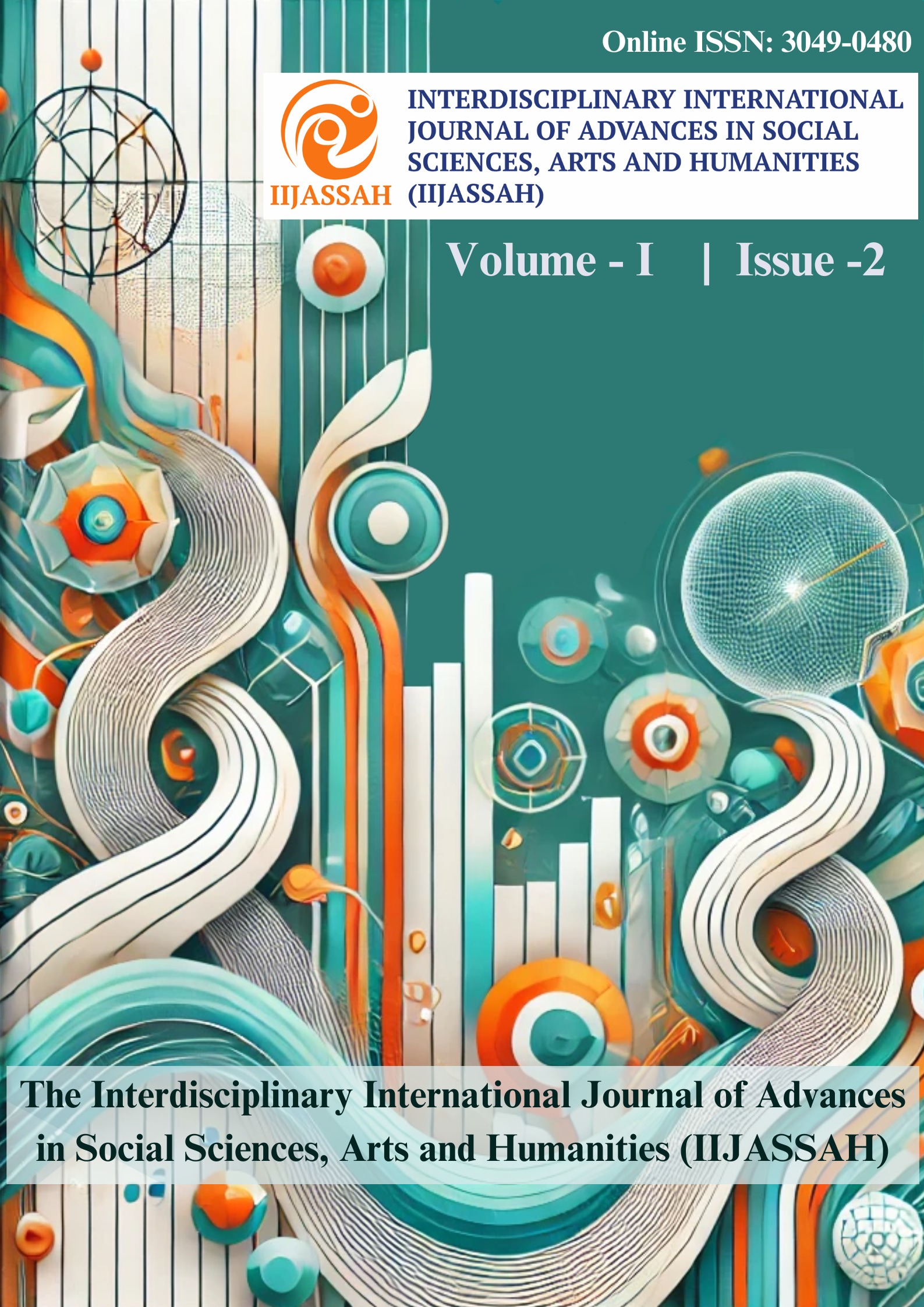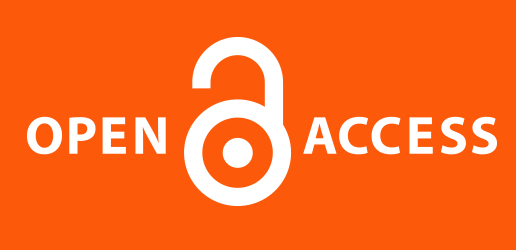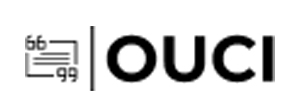Abstract
This study examines gender disparities in Indian academia, focusing on barriers hindering gender equity in the academic workplace. It explores whether women academicians receive deserved recognition and respect, the role of gender biases and institutional policies in limiting career opportunities, and proposes strategies for bridging the gap between educational attainment and professional outcomes. The findings indicate that while doctoral qualifications significantly enhance career prospects, postgraduate women face substantial barriers. Respondents across qualification levels reported inadequate workplace respect, highlighting systemic challenges that advanced degrees alone cannot mitigate. Public sector employees benefit from institutional safeguards, reducing discrimination compared to their private-sector counterparts. Male dominance in decision-making and gaps in policy implementation perpetuate disparities, despite efforts to increase diversity. This paper emphasizes the critical need for systemic change to dismantle entrenched biases, ensuring equitable respect, recognition, and opportunities for women in academia. These measures are essential for fostering diversity, enabling women to contribute effectively to academic leadership, so that their nearly 48% share of India’s population is reflected in the arena of higher education.
Introduction
Historically, gender disparity in education was primarily reflected in the limited enrolment of women in higher education. However, over time, socio-economic transformations have led to a significant increase in female participation across various streams of higher education, signalling a shift in societal norms and opportunities. India has witnessed substantial growth in female enrolment in postgraduate and doctoral programs over the past decade. According to AISHE, (2021-2022) (All India Survey of Higher Education) data, Ph.D. enrolment for women nearly doubled from 47,717 in 2014-15 to 98,636 in 2021-22, marking a growth of 106.71% in the country. In general female enrolment in higher education in India has increased to 2.07 crore (32% increase since 2014-15). However, the number of female faculty members in higher education has increased by only 22% during the same period, from 5.69 lakh in 2014-15 to 6.94 lakh in 2021-22. Furthermore, while the ratio of female to male faculty members improved slightly, from 75 women per 100 men in 2020-21 to 77 in 2021-22, the progress remains considerably slow. (This is to note that there are approximately 93.90 females for every 100 males in India as of 2024 data).
This phenomenon points out to the fact that despite the remarkable growth in female enrolment in postgraduate and Ph.D. programs in India, the corresponding increase in women faculty members in higher education has been disproportionately low. This disparity raises questions about the systemic challenges and barriers that hinder highly educated women from transitioning into academic roles in higher education. Moreover, this discrepancy highlights the need for a deeper investigation into the barriers preventing highly educated women from entering academia in proportion to their qualifications.
This study is significant as it seeks to explore the systemic gaps between advanced educational attainment and professional opportunities for women in academia. Understanding this disparity is critical for addressing gender inequality in higher education institutions, which not only impacts women's career progression, but also limits diversity and representation in academic leadership. By identifying the underlying factors, this research aims to inform policies that promote equitable recruitment and retention practices in higher education.
Literature Review
The literature survey explores the existence and manifestations of gender disparity in academia, focusing on developed Western countries, as we have the notion that the western society is comparatively progressive to establish the rights of the marginalized sections of the society. Research indicates that despite progress in gender equity policies in these countries, women in academia often face systemic challenges such as under-representation in senior positions, unequal opportunities for career advancement, and biases in tenure and promotion processes. These disparities manifest through pay gaps, limited access to leadership roles, and fewer networking opportunities, highlighting the ongoing structural and cultural barriers that hinder gender parity in academic institutions.
A significant number of papers were published during the last three decades from the developed countries on the gross disparity between the educational level of women and the level of recognition they received at their workplace. Jacobs, (1996) in his work provided a comprehensive review of gender inequality in higher education, demonstrating that while women made significant gains in college access and degree completion, persistent barriers remained in terms of field segregation, career advancement, and institutional leadership positions, arguing that gender inequality had shifted from being about access to education to being about differentiation within the educational system and subsequent career outcomes.
The paper of Valian, (1999) discussed the challenges women faced in leadership roles, including negative reactions, accumulated biases, and under-representation in high-level positions, which hindered their professional advancement and recognition, despite having similar qualifications to men. It emphasized the need for addressing these biases and implementing solutions to promote gender equity in leadership roles. Gender inequity in academia is not just about overt discrimination but involves subtle, cumulative disadvantages that become visible only when examined systematically, and the V-curve problem cannot be solved through individual actions alone, but requires institutional-level changes (Bailyn, 2003). Through extensive interviews and empirical analysis at a major research university, the study of Monroeet al., (2008) revealed persistent systemic barriers facing women in academia - including salary inequities, work-life balance challenges, and subtle discrimination in promotion practices - while proposing concrete solutions such as improved mentoring programs, transparent promotion criteria, and family-friendly policies to address those institutional barriers. The study of M. F. Fox, (2010) examined how organizational features in academic science and engineering departments - including work climate, allocation of resources, transparency in decision-making, and departmental policies - significantly influenced gender disparities in faculty advancement and retention, with findings indicating that women faculty faced systematic disadvantages in accessing resources, research support, and leadership opportunities despite similar qualifications to their male counterparts.
More recent authors like Guarino and Borden, (2017) argued that female faculty members performed significantly more internal service work (committee assignments, administrative duties, and institutional housekeeping) than their male counterparts at research universities, revealing a form of gender inequality that could hinder women's research productivity and career advancement since service work, while necessary for the institution, was generally undervalued in promotion and tenure decisions. The work of O’Mearaet al.,(2017) focused on the gender differences on workload distribution and its impact on research productivity of women faculty members. This comprehensive literature review of Blackburn, (2017) examined a decade (2007-2017) of research on women's status in STEM higher education, synthesizing findings across multiple studies to identify persistent barriers including institutional biases, lack of mentorship, work-life balance challenges, and hostile workplace cultures, while also documenting successful interventions and best practices that showed promise in increasing women's representation and retention in STEM academic careers. The study of Weisshaar, (2017) highlighted persistent gender disparities in achieving tenure within academia. While productivity differences explained part of the gap, a significant portion remained attributed to evaluation biases, with women often securing tenure in less prestigious departments and facing longer paths to promotion compared to men. The findings underscore systemic inequities hindering gender parity in academic career progression. Holmanet al.,(2018) analysed the trends in gender disparity across scientific fields and projected timelines for achieving parity. Lundineet al., (2019) examined the existence of systemic gender barriers in the field of academic medicine. The study of Meschittiet al., (2024) investigated gender disparities in academia at Birkbeck, University of London, revealing the under-representation of women, persistent segregation, and challenges such as work-life balance and discrimination. It advocates for a more inclusive academic environment to improve practices and support women's professional trajectories.
Recent studies continue to highlight persistent gender disparities in academia, despite growing awareness and interventions. For instance, women remain underrepresented in senior academic leadership roles within STEM, facing systemic biases in funding outcomes, including fewer grants awarded and reduced funding per grant. These inequities, driven by historical and unconscious biases, hinder women's career progression, retention, and contributions to innovation in medical research (Borger & Purton, 2022). Academic fields have seen an increase in the female-to-male author ratio over two decades, but significant gaps remain in higher academic positions, such as tenure-track and leadership roles (Weisshaar, 2024). According to Weisshaar, biases in research dissemination and evaluation remain significant obstacles, as women face slower knowledge acquisition and diffusion compared to their male counterparts, perpetuating a cycle of marginalization.
Moreover, discipline-specific disparities persist, such as in economics, where women occupy only 25.7% of positions in the UK, and medical research, where gender inequities in funding and recognition affect progress in understanding women-specific health issues (Colino, 2024). Social media’s potential to combat these disparities has been explored, with platforms like Twitter offering new avenues for amplifying women’s research, albeit with mixed success (Academic Oxford, 2024). Diabet al., (2024) did a comprehensive study in the context of African universities. The study revealed a significant gender gap in leadership positions, with only 13% of Vice-Chancellors, less than 50% of females in the executive positions and less than 30% of female deans underscore the need for institutional changes to promote gender equality and address systemic barriers.
These findings emphasize the urgency for academia to implement inclusive policies that foster equitable career progression for women. Stereotypes perpetuate the gender gap in academic medicine by misrepresenting individuals, limiting their opportunities, and hindering fair compensation and leadership access (Monteiro et al., 2023). Huberet al.,(2024) shared their experiences in the context of Australian universities, and emphasized the need for visibility, recognition, and inclusive leadership to foster innovation and ethical AI development. They advocated for mentoring programs and collaborative leadership models to support women in AI roles, while also calling for future research to enhance support for women leaders by addressing gender and cultural dynamics.
Literature Gap
While extensive literature exists on gender inequality in the enrolment of female students in higher education within the Indian context, there is a notable gap in comprehensive research addressing the employment patterns and career advancement of women faculty members in Indian colleges, universities, and research institutes. Studies leveraging either cross-sectional or longitudinal data to analyze these dimensions remain conspicuously absent. The present work has tried to provide a comparative framework to examine gender disparities in academia within the Indian context. It has tried to find out whether there exist persistent structural and cultural barriers that hinder gender equity at academic workplace, which further contributes to the under-representation of qualified women in various positions in academia.
This paper seeks to explore the following objectives:
1. Exploration on whether women academicians receive the recognition and respect that they deserve at their workplace.
2. Investigation of the role of gender biases and institutional policies in limiting career opportunities for women in academia.
3. Recommendation for actionable strategies and policies to bridge the gap between educational attainment and professional opportunities for women in higher education.
Methodology
To accomplish the first two objectives an online primary survey was conducted (during the period 1st to 15th November 2024) using purposive sampling, involving 60 highly educated female respondents from India. These respondents are either employed, or independent educator, or in a transitional phase of job-switching in the field of higher education (High School, College, University) either in public or in private sector. Age distribution among the participants revealed that 50% were aged between 41 to 60 years, 35% belonged to the 31 to 40 years age group, and the remaining 15% were between 25 to 30 years. Employment distribution showed that 87% of the respondents were employed in the private sector, 10% in the public sector, and the rest were self-employed or transitioning between jobs. Out of 60 respondents, 53 women possess post-graduation degree whereas 7 possess doctoral degree. This data provides valuable insights into the demographic and occupational profiles of women in diverse career phases.
Result
The data analysis explores the relationship between educational qualifications and workplace outcomes for respondents, focusing on career advancement opportunities and respect received from employers. The following data reveals the distribution of career progression and workplace respect among individuals with postgraduate and doctoral qualifications, shedding light on disparities in recognition, and advancement based on educational attainment.
| Level of Qualification | Types of response | ||
|---|---|---|---|
| No | Yes | Grand Total | |
| PhD. | 7 | 7 | |
| Post-graduation | 9 | 44 | 53 |
| Grand Total | 9 | 51 | 60 |
The analysis in Table 1 reveals that career advancement opportunities are strongly correlated with educational qualifications. Among the respondents, 100% of Doctoral degree holders reported having received career advancement opportunities. For postgraduate respondents, 83% respondents indicated positive responses, while 17% reported no such opportunities. The data highlights a stark disparity, with Doctoral degree holders being unanimously recognized for advancement, while postgraduates, representing the majority, face greater challenges in accessing similar opportunities.
| Level of Qualification | Nature of respect received | |||
|---|---|---|---|---|
| No | Undecided | Yes | Grand Total | |
| PhD. | 1 | 2 | 4 | 7 |
| Post-graduation | 12 | 12 | 29 | 53 |
| Grand Total | 13 | 14 | 33 | 60 |
Table 2 reflects that there does not exist any uniform relationship between the “respect received at the workplace from their higher management by the women academicians” and their “level of qualification”. Among Doctoral degree holders, 57% respondents reported receiving respect, while the rest were either undecided, or did not perceive respect. For postgraduate respondents, 55% affirmed receiving respect, approximately 23% were undecided, and nearly 23% reported a lack of respect. Although Doctoral degree holders exhibit a slightly higher likelihood of receiving respect, the data shows that a substantial number of women across both groups remain uncertain or perceive a lack of respect at their workplaces.
To delve into the problem further it has been attempted to investigate whether there exists any relationship between the type of sector (public or private) where the respondents are working and the level of recognition that they receive in their professional field from their supervisors or higher management (Table 3). The case of the self-employed respondents has not been considered in this instance.
| Sector of Employment | Nature of respect received | |||
|---|---|---|---|---|
| No | Undecided | Yes | Grand Total | |
| Private | 13 | 13 | 26 | 52 |
| Public | 1 | 5 | 6 | |
| Self employed | NA | NA | NA | NA |
| Grand Total | 13 | 14 | 31 | 59 |
The data reveals variations in the respect perceived by respondents across the type of sectors where they work. In the private sector, where 52 respondents are employed, only 50% feel respected, 25% are undecided, and 25% report a lack of respect. Conversely, in the public sector, the majority of the respondents report receiving respect. Overall, 55% of respondents feel respected, and there exists much better recognition in the public sector received by the highly qualified women academicians compared to the private sector.
Discussion
The findings of this study highlight significant disparities in the professional experiences of women academicians in India, focusing on career advancement opportunities, workplace respect, and sectoral differences. This section compares these results with the existing body of literature and underscores the contributions of this study to understanding gender disparities in academia. This study contributes to the understanding of gender disparities in Indian academia by integrating global perspectives with localized insights. Its findings underline the necessity of institutional reforms and targeted strategies to ensure equitable opportunities and recognition for women academicians across all levels of education and employment sectors.
Following are the key observations transpired from the survey:
· Ph.D. holders experience unanimous career advancement opportunities, whereas postgraduates face noticeable barriers, indicating a strong advantage for doctoral qualifications.
· A significant proportion of respondents across both educational levels either experience or perceive inadequate respect from employers, suggesting underlying systemic issues beyond qualifications.
· The data suggests persistent challenges for women, even those with advanced degrees, in achieving equitable respect and recognition in professional environments.
· The data highlights significant disparities, with public sector employees reporting higher levels of respect compared to those in the private sector, where a notable portion either experiences disrespect or remains undecided.
Limitation
The primary limitation of this research lies in its relatively small sample size of 60 respondents, which may not adequately capture the diversity and complexity of experiences among women faculty members in Indian academia. The use of a non-probabilistic sampling technique further restricts the generalizability of the findings, as it limits the representativeness of the sample. Consequently, the results may not fully reflect the broader patterns of gender disparity across different academic disciplines, institutions, or regions. Additionally, the reliance on self-reported data introduces the possibility of response bias, which may affect the accuracy and objectivity of the insights derived. Future research could benefit from employing larger, probabilistic samples and incorporating longitudinal data to provide a more comprehensive understanding of gender inequalities in academia.
Conclusion
The findings reveal that while doctoral qualifications significantly enhance career advancement opportunities for women academicians, postgraduates face considerable barriers, reflecting unequal professional access. Despite higher educational attainment, many respondents across qualification levels reported insufficient respect from employers, underscoring systemic challenges in workplace recognition. These results highlight that advanced qualifications alone are insufficient to address disparities, pointing to the critical need for institutional reforms and the dismantling of entrenched gender biases to ensure equitable respect and career opportunities for women in academia. As the public sector employees are protected by institutional safeguards, hence the women working in the higher education institutes under that sector face lesser discrimination to some extent. Even though policies aim to increase gender diversity, the gap in implementation and awareness limits their effectiveness. Furthermore, male dominance in decision-making roles perpetuates disparities in promotions and recognition for women scholars in various academic fields. Gender inequality has transitioned from issues of access to education to challenges related to systemic differentiation within educational institutions. The resulting disparities in career outcomes hinder highly educated women from securing appropriate teaching positions in higher education.
Recommendation
Women comprise nearly 48% of India's population, hence the representation of the women in academia should reflect proportional parity. Through in-depth interviews and case studies of successful women leaders in higher education, Hannumet al.,(2015) identified common strategies and pathways that enabled the women to overcome institutional barriers and reach leadership positions, highlighting the importance of mentorship, networking, strategic career planning, and resilience, while also providing practical guidance for aspiring women leaders in academia and recommendations for institutional change to support women's advancement into senior academic leadership roles. Thomas, Bystydzienski and Desai, (2015) explored how peer mentoring circles for women STEM faculty at a Midwestern research university had addressed diverse mentoring needs. The circles facilitated discussions about organizational challenges, leading to actionable steps such as workshops and the formation of college-wide teams to address systemic issues. The study highlighted that peer mentoring can be a powerful tool for institutional change, particularly in promoting inclusivity for historically marginalized faculty groups.
To address gender disparity in academia, the Indian government can implement targeted measures, including enforcing gender-equal hiring practices and transparent promotion policies in higher education institutions. Strengthening workplace safeguards to prevent gender bias, particularly in private organizations, is essential. Mentorship programs can support women’s career advancement through leadership opportunities, while recognition and financial incentives can reward institutions achieving gender parity. Additionally, awareness campaigns promoting inclusivity and addressing gender issues can create equitable environments, fostering diversity and ensuring women's full participation in academic leadership and faculty roles.
Future Scope
Further research in this field can explore the intersectionality of gender disparity in academia, examining how variables such as caste, economic background, and geographic location influence the experiences of female faculty members in higher education in India. Longitudinal studies could assess the career trajectories of female academicians to understand the impact of institutional policies on their professional growth. Investigating the effectiveness of existing mentorship and support programs for women could offer valuable insights. Additionally, comparative analyses between public and private higher education institutions of India may highlight best practices and areas requiring reform to ensure gender equity across academia. The findings of the present work underscore a significant issue - while women, constituting 48.44% of India’s population, face entrenched gender disparities in academia, the situation of the LGBTQ+ community (already marginalized due to socio-cultural stigmas) demands critical examination. This warrants further investigation to develop equitable academic frameworks that address the unique barriers faced by LGBTQ+ individuals in the field of academics in India.
Conflict Of Interest
The author declares that there are no conflicts of interest that may influence the interpretation of this research. As this study relies on secondary literature review, obtaining informed consent from participants is not applicable.
Acknowledgement
Author extends her sincere appreciation to all the respondents who participated in this study. Their willingness to share their experiences and insights made this research possible. She is grateful to her colleagues for their intellectual companionship and stimulating discussions. Special mention goes to her colleague Dr. Priyanka Jaiswal for her assistance with data collection. She would like to thank the library staff for their assistance in accessing research materials and resources. Finally, she is forever indebted to her family for their understanding, endless patience, and encouragement when it was most needed.
References
- All India Survey on Higher Education. (2021-2022). All India Survey on Higher Education (AISHE). Ministry of Education, Government of India, i-iii. https://aishe.gov.in
- Bailyn, L. (2003). Academic careers and gender equity: Lessons learned from MIT. Gender, Work & Organization, 10(2), 137-153. https://doi.org/10.1111/1468-0432.00008
- Blackburn, H. (2017). The status of women in STEM in higher education: A review of the literature 2007-2017. Science & Technology Libraries, 36(3), 235-273. https://doi.org/10.1080/0194262X.2017.1371658
- Borger, J. G., & Purton, L. E. (2022). Gender inequities in medical research funding is driving an exodus of women from Australian STEMM academia. Immunology & Cell Biology, 100(9), 674-678. https://doi.org/10.1111/imcb.12568
- Colino, S. (2024). Women are still under-represented in medical research: Here's where the gender gap is most pronounced. Time. https://time.com/7171341/gender-gap-medical-research/
- Diab, R., Kalele, P., Bulani, M., Boateng, F. K., & Mukeshimana, M. (2024). Gender perspectives on academic leadership in African universities. International Journal of African Higher Education, 10(2), 138-159. https://doi.org/10.6017/ijahe.v10i2.17619
- Fox, M. F. (2010). Women and men faculty in academic science and engineering: Social-organizational indicators and implications. American Behavioral Scientist, 53(7), 997-1012. https://doi.org/10.1177/0002764209356234
- Guarino, C. M., & Borden, V. M. H. (2017). Faculty service loads and gender: Are women taking care of the academic family? Research in Higher Education, 58(6), 672-694. https://doi.org/10.1007/s11162-017-9454-2
- Hannum, K. M., Muhly, S. M., Shockley-Zalabak, P. S., & White, J. S. (2015). Women leaders in higher education: Success stories from the trenches. Stylus Publishing.
- Holman, L., Stuart-Fox, D., & Hauser, C. E. (2018). The gender gap in science: How long until women are equally represented? PLOS Biology, 16(4), e2004956. https://doi.org/10.1371/journal.pbio.2004956
- Huber, E., Selvaratnam, R., & Taylor, C. (2024). Women in higher education leadership: Diversity as strength in times of AI. ASCILITE Publications. https://doi.org/10.14742/apubs.2024.1444
- Jacobs, J. A. (1996). Gender inequality and higher education. Annual Review of Sociology, 22, 153-185. https://doi.org/10.1146/annurev.soc.22.1.153
- Lundine, J., Bourgeault, I. L., Clark, J., Heidari, S., & Balabanova, D. (2019). Gender bias in academic medicine: Challenges and opportunities. The Lancet, 393(10171), 531-533. https://doi.org/10.1016/S0140-6736(18)32267-0
- Meschitti, V., & Smith, H. (2024). Systemic barriers and gender disparities in academia: Case studies from Birkbeck, University of London. International Journal of Academic Development, 29(1), 45-61.
- Monroe, K., Ozyurt, S., Wrigley, T., & Alexander, A. (2008). Gender equality in academia: Bad news from the trenches, and some possible solutions. Perspectives on Politics, 6(2), 215-233. https://doi.org/10.1017/S1537592708080572
- Monteiro, S., Chan, T. M., & Kahlke, R. (2023). His opportunity, her burden: A narrative critical review of why women decline academic opportunities. ASME. https://doi.org/10.1111/medu.15141
- O'Meara, K., Kuvaeva, A., Nyunt, G., Waugaman, C., & Jackson, R. (2017). Asked more often: Gender differences in faculty workload in research universities and the work interactions that shape them. American Educational Research Journal, 54(6), 1154-1186. https://doi.org/10.3102/0002831217716767
- Oxford Academic. (2024). Women in academia and the impact of social media on career progression. Oxford Studies in Education, 42(1), 33-48.
- Thomas, N., Bystydzienski, J., & Desai, A. (2015). Changing institutional culture through peer mentoring of women STEM faculty. Innovative Higher Education, 40(2), 143-157. https://doi.org/10.1007/s10755-014-9300-9
- Valian, V. (1999). Why so slow? The advancement of women. MIT Press. https://doi.org/10.7551/mitpress/7235.001.0001
- Weisshaar, K. (2017). Publish and perish? An assessment of gender gaps in promotion to tenure in academia. Social Forces, 96(2), 529-560. https://doi.org/10.1093/sf/sox052
- Weisshaar, K. (2024). Exploring gender disparities in academic career progression. Journal of Higher Education Studies, 35(2), 98-113.












